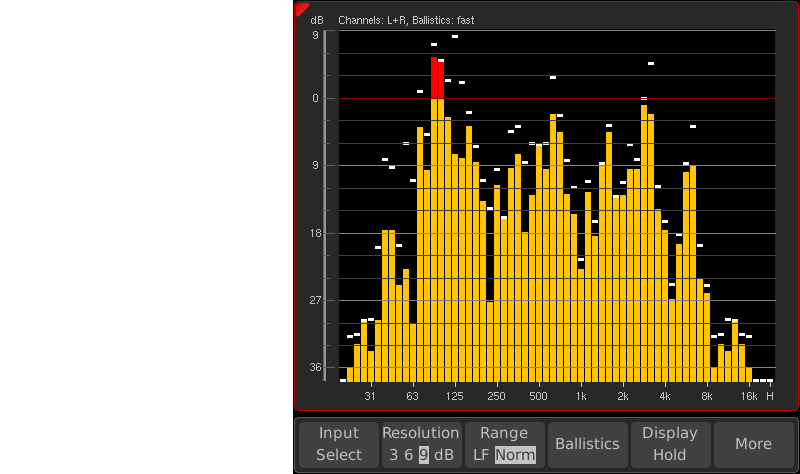RTA (Real Time Analyzer)
Move the mouse accross the display elements to get the corresponding descriptions.

The normal frequency range reaches from 20 Hz to 20 Khz and equals the typical range a human ear can detect. An optional "H" band shows spectral signal components above 20 kHz.
Alternatively, the low frequency range (LF - 5 Hz to 5 kHz) can be switched. This frequency span providing a higher resolution covers almost all parts of the human speech.
The human ear perceives different frequencies with the same acoustic pressure not as identically loud. For this reason different standardized weighting filters can be selected. The RMS integration time is pursuant to IEC651. The RMS peak rises with 10 ms, the fallback time is the same as a peakmeter. The display’s reference point and resolution can be shifted for a clearer readout in the window. The RTA’s layer display is always relative.